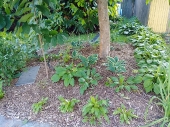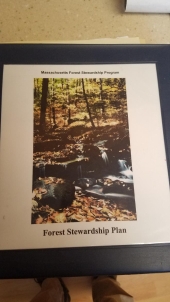




![Filename: top-view-of-lot.png
Description: top view of yard [Thumbnail for top-view-of-lot.png]](/t/57839/a/41979/top-view-of-lot.png)
 3
3




Trying to achieve self-reliance on a tiny suburban plot: http://gardenofgaladriel.blogspot.com
 2
2




 It's a challenge but one you can rise to.
It's a challenge but one you can rise to.



 3
3












I make a Maple Syrup instructional movie! Check it out HERE
SKIP books, get 'em while they're hot!!! Skills to Inherit Property
See me in a movie building a massive wood staircase:Low Tech Lab Movie
 1
1




 2
2




"The rule of no realm is mine. But all worthy things that are in peril as the world now stands, these are my care. And for my part, I shall not wholly fail in my task if anything that passes through this night can still grow fairer or bear fruit and flower again in days to come. For I too am a steward. Did you not know?" Gandolf




 . (Sorry, Marco B......have a soft spot for that tree from my youth....
. (Sorry, Marco B......have a soft spot for that tree from my youth....  ) With regard to gardening efforts with the trees nearby, there is something called "root pruning" on one side of a tree, but this will not gain you permanent freedom from the negative affects of the neighboring tree from my understanding.
) With regard to gardening efforts with the trees nearby, there is something called "root pruning" on one side of a tree, but this will not gain you permanent freedom from the negative affects of the neighboring tree from my understanding.“The most important decision we make is whether we believe we live in a friendly or hostile universe.”― Albert Einstein
 3
3




 1
1




 1
1




Don't let perfect be the enemy of good.
 2
2




http://www.popcliq.com (web development), GoPermaculture Food Forest http://www.permies.com/t/57687/forest-garden/Permaculture-Food-Forest-suburban-permaculture, Sea Buckthorn (Seaberry) grower (hobbiest) https://www.facebook.com/michelle.bisson.37, zone 3b/4b (borderline) Quebec Canada
 5
5




"Is performing a tree-massacre necessary to turn my yard into a permaculture garden?"
http://www.popcliq.com (web development), GoPermaculture Food Forest http://www.permies.com/t/57687/forest-garden/Permaculture-Food-Forest-suburban-permaculture, Sea Buckthorn (Seaberry) grower (hobbiest) https://www.facebook.com/michelle.bisson.37, zone 3b/4b (borderline) Quebec Canada








If it survives in my garden, it was meant to live!




Our Microgreens: http://www.microortaggi.it
 1
1





 2
2




Hans Albert Quistorff, LMT projects on permies Hans Massage Qberry Farm magnet therapy gmail hquistorff












Idle dreamer









 1
1




Nick Blonigen wrote:It's funny how many people here think you can garden between those silver maples. I have a half-dozen silver maples in my side yard, about 40 ft tall, and my first thought was a wooded 1/4 acre under them. No such luck. That area has the driest soil, despite the shade, no matter how much mulch I apply. I'm finally having half of them removed this fall, and the others next year.
Silver maples are water hogs of the worst degree.
"The rule of no realm is mine. But all worthy things that are in peril as the world now stands, these are my care. And for my part, I shall not wholly fail in my task if anything that passes through this night can still grow fairer or bear fruit and flower again in days to come. For I too am a steward. Did you not know?" Gandolf

|
Live large! And I'm talking to you tiny ad!
Play Your Way to a Sustainable Lifestyle: Uncover Permaculture Principles with Each Card
https://gardener-gift.com/
|




